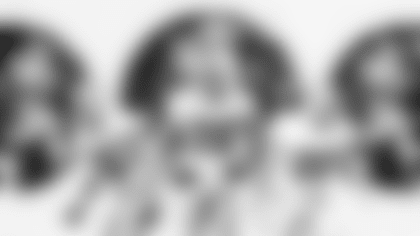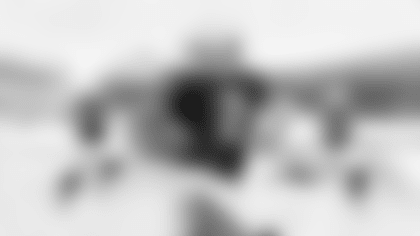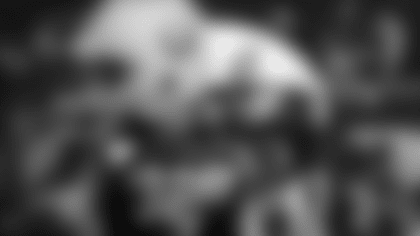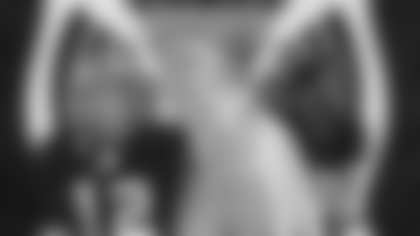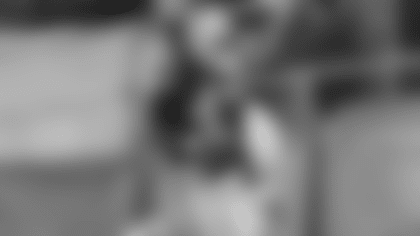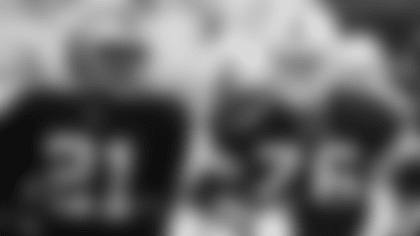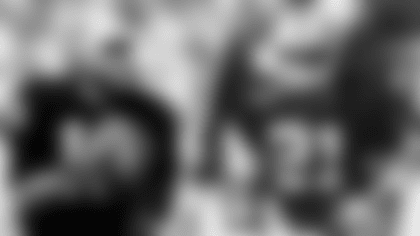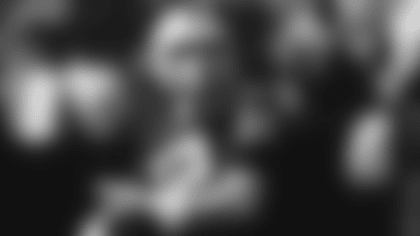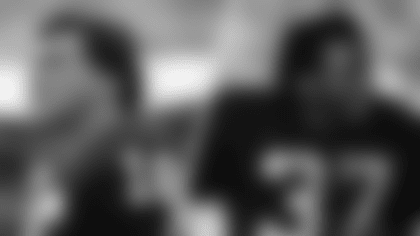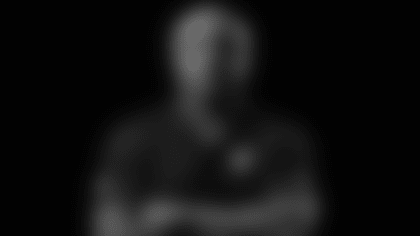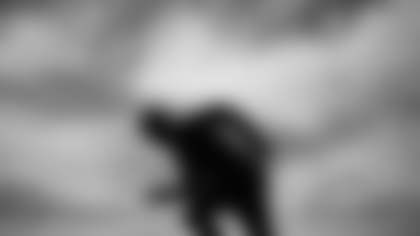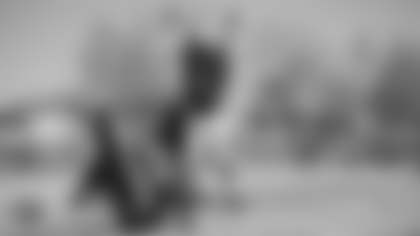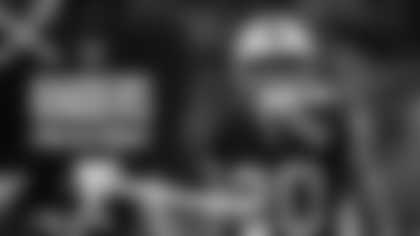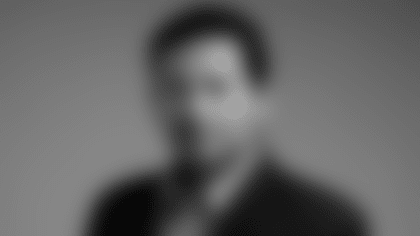The finalists for the 2022 Heisman Trophy will be announced December 5, which coincides with Jim Plunkett's 75th birthday.
Before Plunkett was a two-time Super Bowl champion with the Raiders, he cemented his legacy at Stanford University as one of the greatest quarterbacks in the college's history. Plunkett still stands as the university's lone Heisman winner in 1970, dominating in his senior season by throwing for nearly 3,000 yards and 19 touchdowns.
That same season, he led the Cardinal to their first Pac-8 Championship and Rose Bowl appearance in 19 years. In the Rose Bowl against Ohio State, Plunkett gained 314 total scrimmage yards and threw a touchdown pass in the 27-17 victory over the Buckeyes.
With his Super Bowl XV ring on his hand, the former MVP sat down with Raiders.com's Levi Edwards to reflect on the journey to winning the 1970 Heisman Trophy, and who helped him get there.
Levi Edwards: What made you decide to go to Stanford?
Jim Plunkett: A lot of things. An education, for one. If things didn't work out football-wise, I wanted to go to a school that would provide me with an opportunity to do well in other things and Stanford gave me that opportunity. No. 2, John Ralston was a great coach, great recruiter and I really felt comfortable meeting the people at Stanford – their coaches, their front office, some of the players. Plus, it was close to home. With my family situation, my father was legally blind, my mother was totally blind and it gave me an opportunity to go to a school that was close by.
LE: What are some of your fondest football memories playing at Stanford?
JP: I had some great teammates, some great fraternity brothers that I felt very comfortable with. We're lifelong friends, all of us. When I got there, Stanford hadn't been to the Rose Bowl in 19 years. Those guys that I came to Stanford with – both freshmen and even a few upperclassmen – that was our goal to get to a Rose Bowl after all that time. Fortunately we succeeded, not only once, but twice. The year after [I graduated], they went again. I think that helped turn Stanford around into a football team that was to be reckoned with.
LE: Who were some of those teammates you came into Stanford with that helped change the culture?
JP: Bob Rinehart from Northern California was a guard for us, just a great individual. John Sande was an underweight, small center who started for us in the Rose Bowl from Reno, Nevada. Randy Vataha, a junior college transfer from Southern California, and my first year there, I had Gene Washington, who was a tremendous player and went on to play in the NFL. Dan Lightfoot, I mean these guys are still great friends to this day.
They were overlooked by possibly a lot of other schools, but these guys had other ambitions. I went to school with a lot of smart guys, not including me. They were there to get an education and go on do wonderful things in the world, but they could also play football. And they were overlooked by a lot of other schools because maybe they were undersized. We had Jackie Brown, Hillary Shockley in the backfield, just guys who made things happen. Football-wise they were overlooked by a lot of other schools but Stanford found a place for them, found a place for me.
LE: What was the biggest obstacle you had to overcome at Stanford?
JP: I was redshirted when I first got there. I had neck surgery prior to that because I had cancer. I didn't know if I'd ever play again. I overcame that and after I was redshirted, I proved to them that I was capable of playing quarterback for Stanford University.
I had been highly recruited by many schools all across the country. Notre Dame, all the Pac-8 schools back then except USC. It was a very stressful time not knowing if I'd ever play again and redshirting – which really brought me down quite a bit – and then taking over my last three years. At Stanford, we had a lot of success, which they hadn't had in a long time. It was a great feeling to help Stanford get back on the football map.
LE: Take us through going into the 1970 Rose Bowl against Ohio State as underdogs. Do you believe that game was your Heisman moment?
JP: I think the game was a big part of it. I led the nation in total offense in my three years. I accomplished a lot over my three years at Stanford in football. People knew who I was, but that [game] might have put me over the hump without question. I had a very good game against them, not necessarily a great game but I didn't make any mistakes. Plus, I ran a lot in that game. We ran the quarterback draw against them and it was very effective. They weren't expecting me to run very much.
When I first got to Stanford, I ran a little bit of the option, but as my seasons progressed my junior and senior years, they didn't want me to run as much because they wanted to protect me and not get me hurt. They put it back in for the Rose Bowl and I thought it completely, totally took the Buckeyes by surprise.
LE: When and how did you find out you were the Heisman winner?
JP: I was invited to an event and it was announced to me there. I had no idea it was coming. It was quite the surprise. [Joe] Theismann had an upset in his bowl game and Archie Manning, who I have a lot of respect for, was a great quarterback and easily could've won it. For me to win it, it was a surprise and it was one of the greatest feelings I ever had in my life at that time.
LE: How much does it mean to you to have been the first Hispanic Heisman winner?
JP: I've never looked at it that way, but as I've got older and looked back, I thought it was a tremendous recognition for a Hispanic person to win the Heisman. I think it added a lot of respect to the Hispanic community. They were so proud of what I had accomplished, and I'm proud to be Hispanic and to have won that award. But really, I won it as a football player. I was a hard-working kid who wanted to make good, and I feel very fortunate for all those things that occurred.
LE: Where do you keep your Heisman Trophy?
JP: It's in our home on display. We have a trophy area, but now my stuff is kind of pushed away because my kids and their little trophies. But you know that's the way it is.
View some of the best images from Super Bowl champion Jim Plunkett's iconic legacy with the Silver and Black.
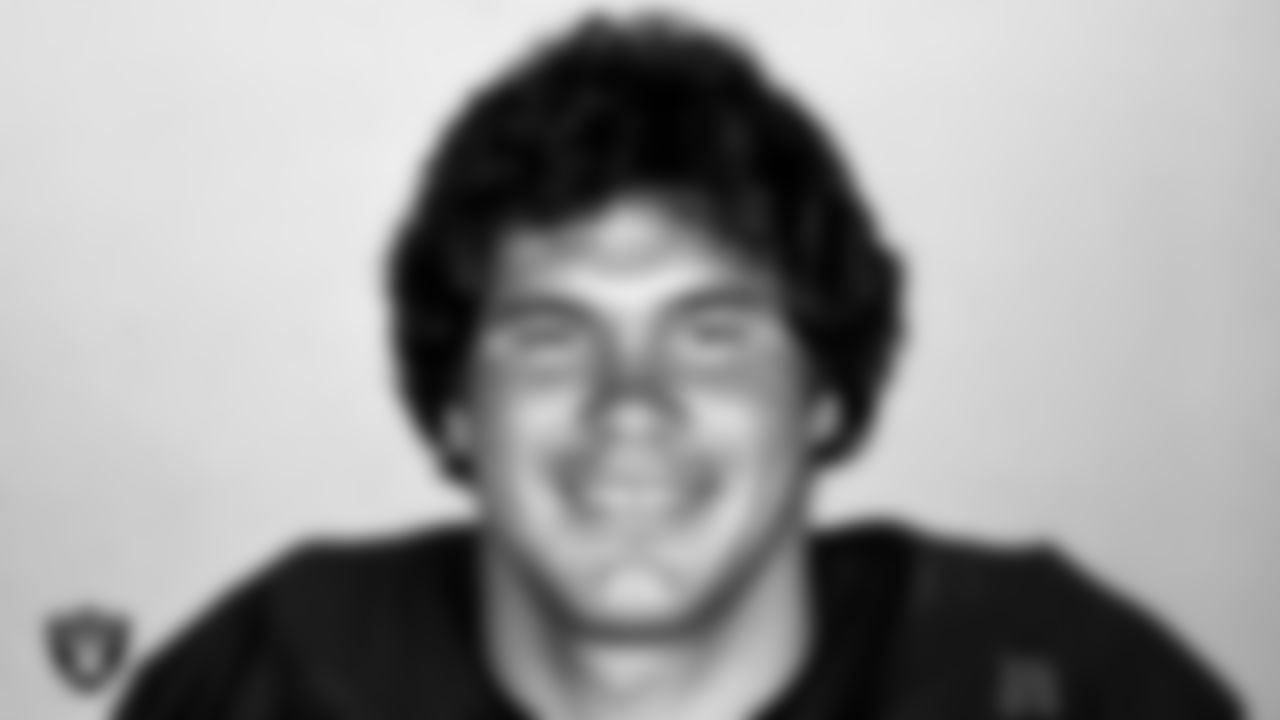
Jim Plunkett joined the Raiders in 1978 as a backup to Kenny Stabler. Plunkett got his chance to start in 1980 and went on to be named Super Bowl XV MVP and also led the Raiders to the Super Bowl XVIII title. Plunkett played in 70 regular-season games with 57 starts and completed 960 of 1,707 pass attempts for 12,665 yards and 80 TDs.

Jim Plunkett joined the Raiders in 1978 as a backup to Kenny Stabler. Plunkett got his chance to start in 1980 and went on to be named Super Bowl XV MVP and also led the Raiders to the Super Bowl XVIII title. Plunkett played in 70 regular-season games with 57 starts and completed 960 of 1,707 pass attempts for 12,665 yards and 80 TDs.
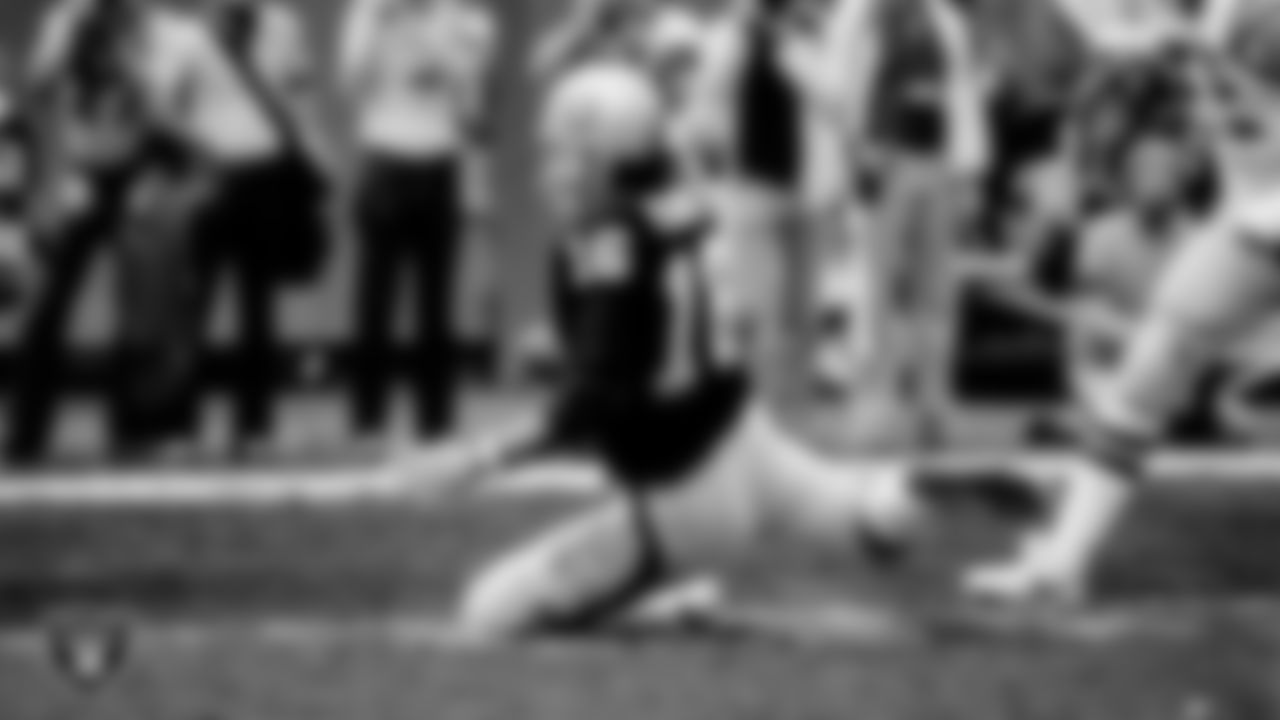
Jim Plunkett joined the Raiders in 1978 as a backup to Kenny Stabler. Plunkett got his chance to start in 1980 and went on to be named Super Bowl XV MVP and also led the Raiders to the Super Bowl XVIII title. Plunkett played in 70 regular-season games with 57 starts and completed 960 of 1,707 pass attempts for 12,665 yards and 80 TDs.
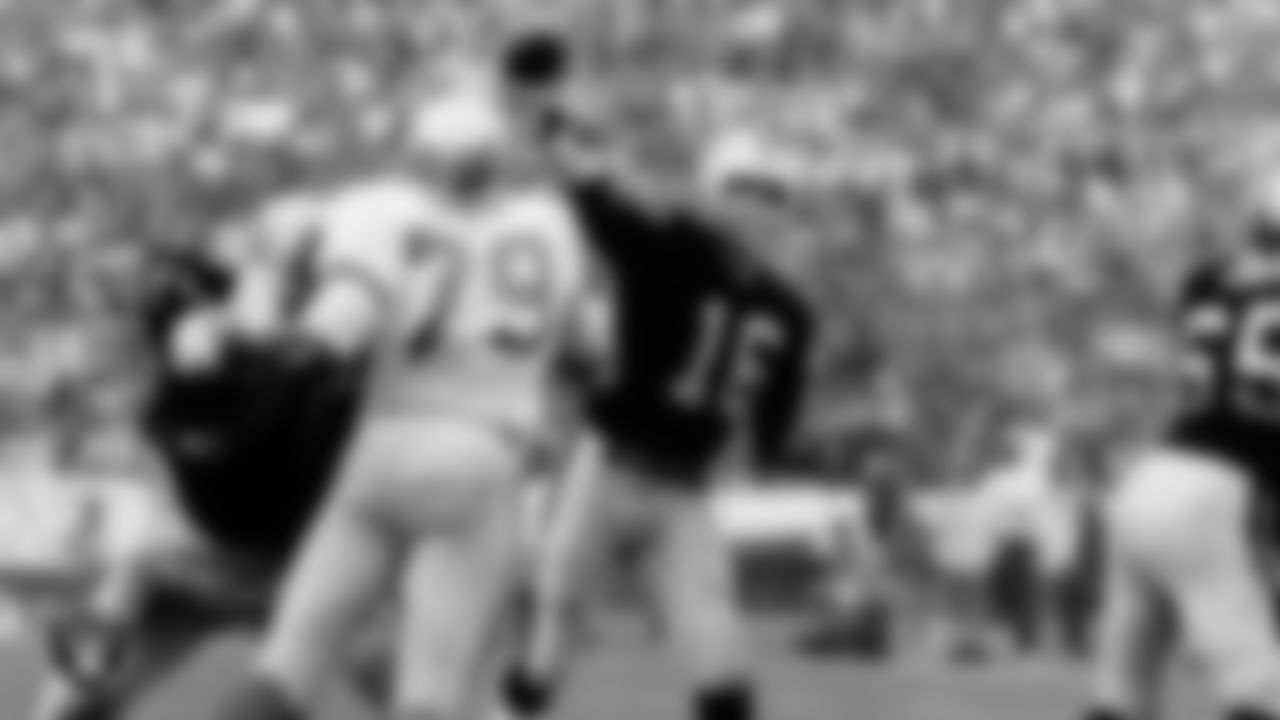
Jim Plunkett joined the Raiders in 1978 as a backup to Kenny Stabler. Plunkett got his chance to start in 1980 and went on to be named Super Bowl XV MVP and also led the Raiders to the Super Bowl XVIII title. Plunkett played in 70 regular-season games with 57 starts and completed 960 of 1,707 pass attempts for 12,665 yards and 80 TDs.
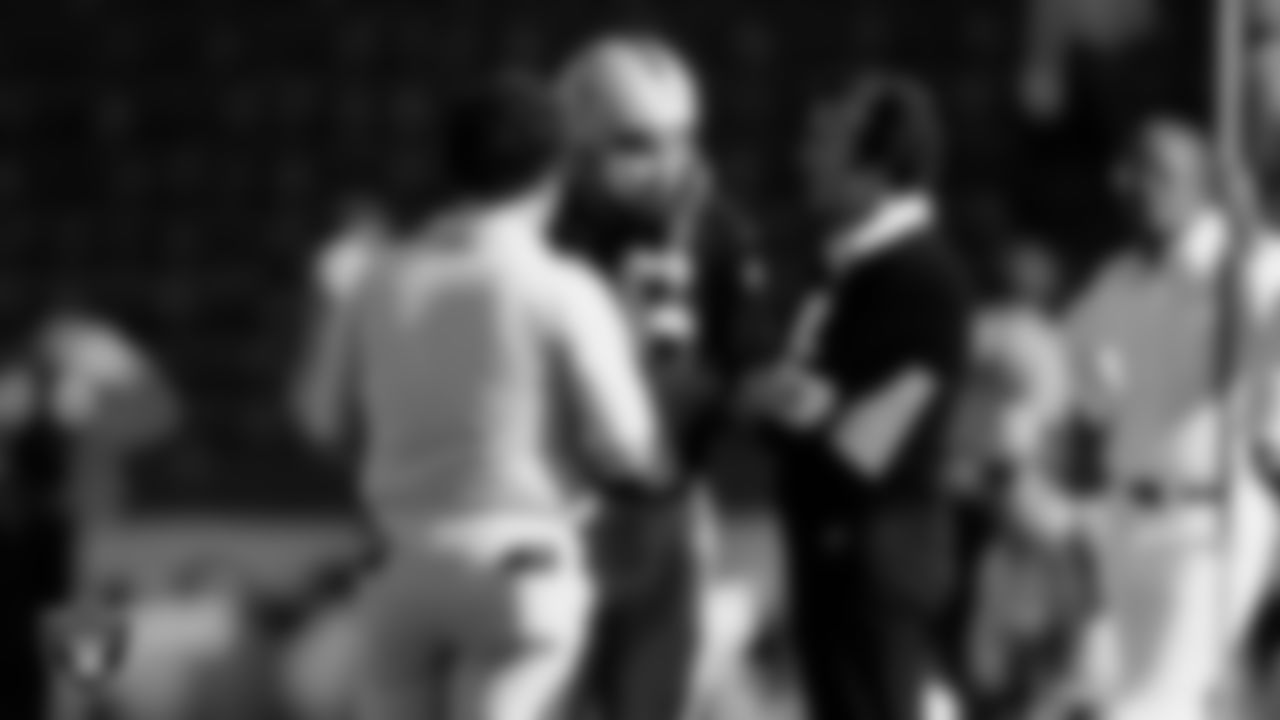
Jim Plunkett joined the Raiders in 1978 as a backup to Kenny Stabler. Plunkett got his chance to start in 1980 and went on to be named Super Bowl XV MVP and also led the Raiders to the Super Bowl XVIII title. Plunkett played in 70 regular-season games with 57 starts and completed 960 of 1,707 pass attempts for 12,665 yards and 80 TDs.
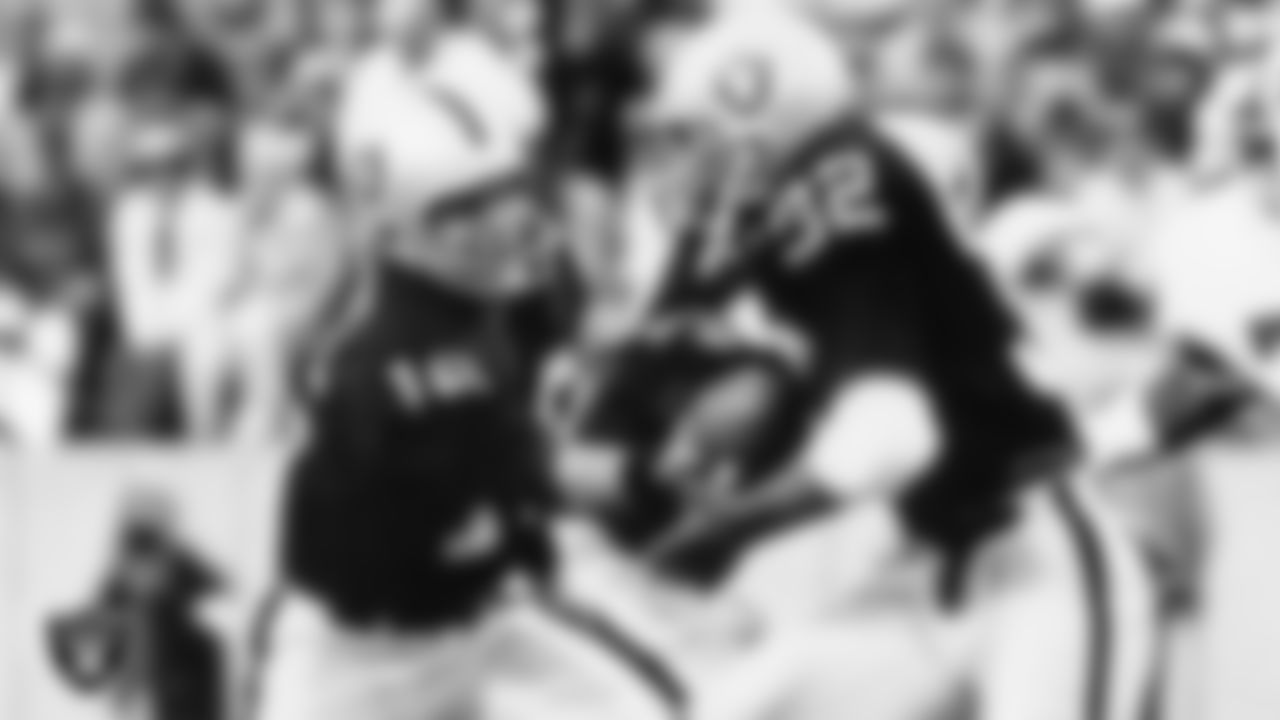
Jim Plunkett joined the Raiders in 1978 as a backup to Kenny Stabler. Plunkett got his chance to start in 1980 and went on to be named Super Bowl XV MVP and also led the Raiders to the Super Bowl XVIII title. Plunkett played in 70 regular-season games with 57 starts and completed 960 of 1,707 pass attempts for 12,665 yards and 80 TDs.

Jim Plunkett joined the Raiders in 1978 as a backup to Kenny Stabler. Plunkett got his chance to start in 1980 and went on to be named Super Bowl XV MVP and also led the Raiders to the Super Bowl XVIII title. Plunkett played in 70 regular-season games with 57 starts and completed 960 of 1,707 pass attempts for 12,665 yards and 80 TDs.
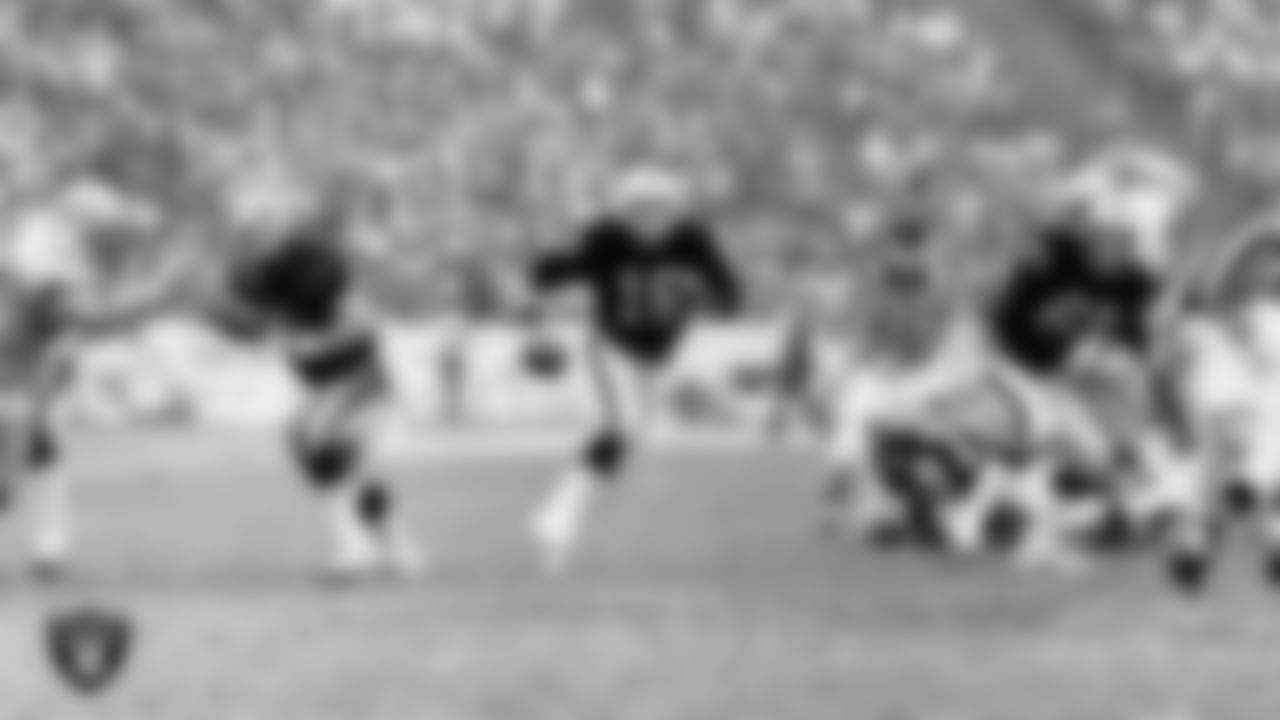
Jim Plunkett joined the Raiders in 1978 as a backup to Kenny Stabler. Plunkett got his chance to start in 1980 and went on to be named Super Bowl XV MVP and also led the Raiders to the Super Bowl XVIII title. Plunkett played in 70 regular-season games with 57 starts and completed 960 of 1,707 pass attempts for 12,665 yards and 80 TDs.
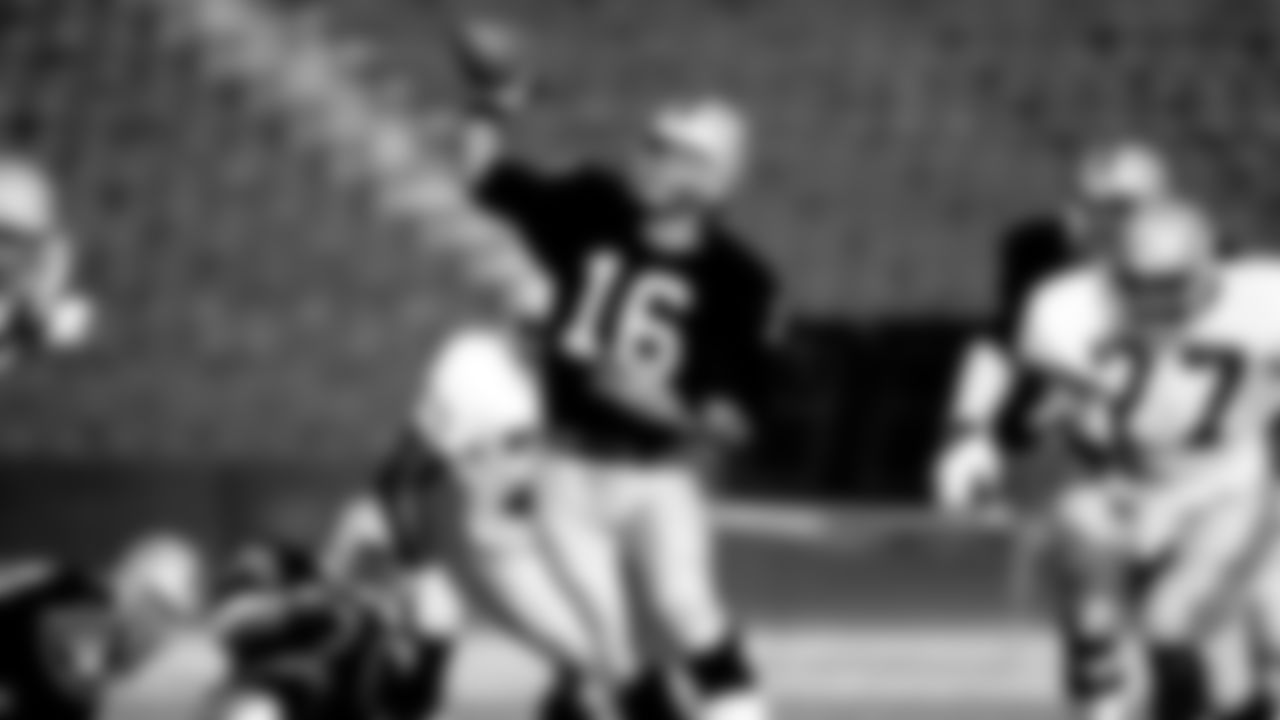
Jim Plunkett joined the Raiders in 1978 as a backup to Kenny Stabler. Plunkett got his chance to start in 1980 and went on to be named Super Bowl XV MVP and also led the Raiders to the Super Bowl XVIII title. Plunkett played in 70 regular-season games with 57 starts and completed 960 of 1,707 pass attempts for 12,665 yards and 80 TDs.
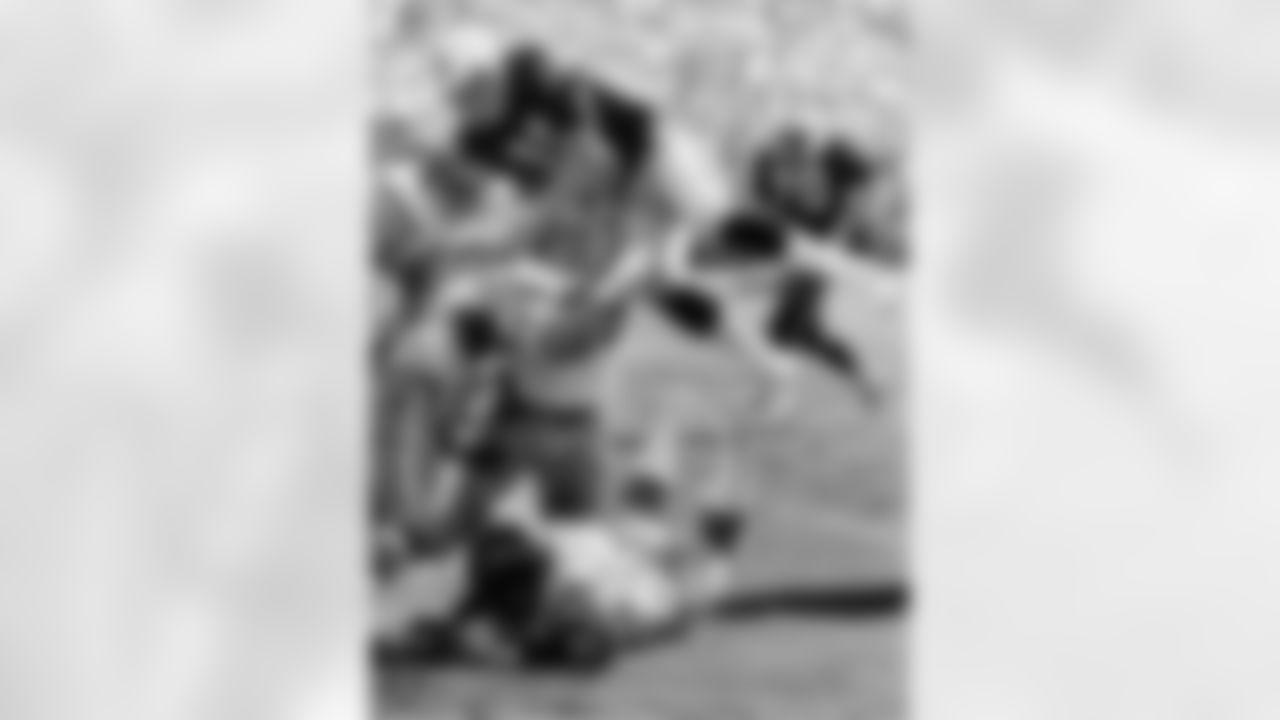
Jim Plunkett joined the Raiders in 1978 as a backup to Kenny Stabler. Plunkett got his chance to start in 1980 and went on to be named Super Bowl XV MVP and also led the Raiders to the Super Bowl XVIII title. Plunkett played in 70 regular-season games with 57 starts and completed 960 of 1,707 pass attempts for 12,665 yards and 80 TDs.
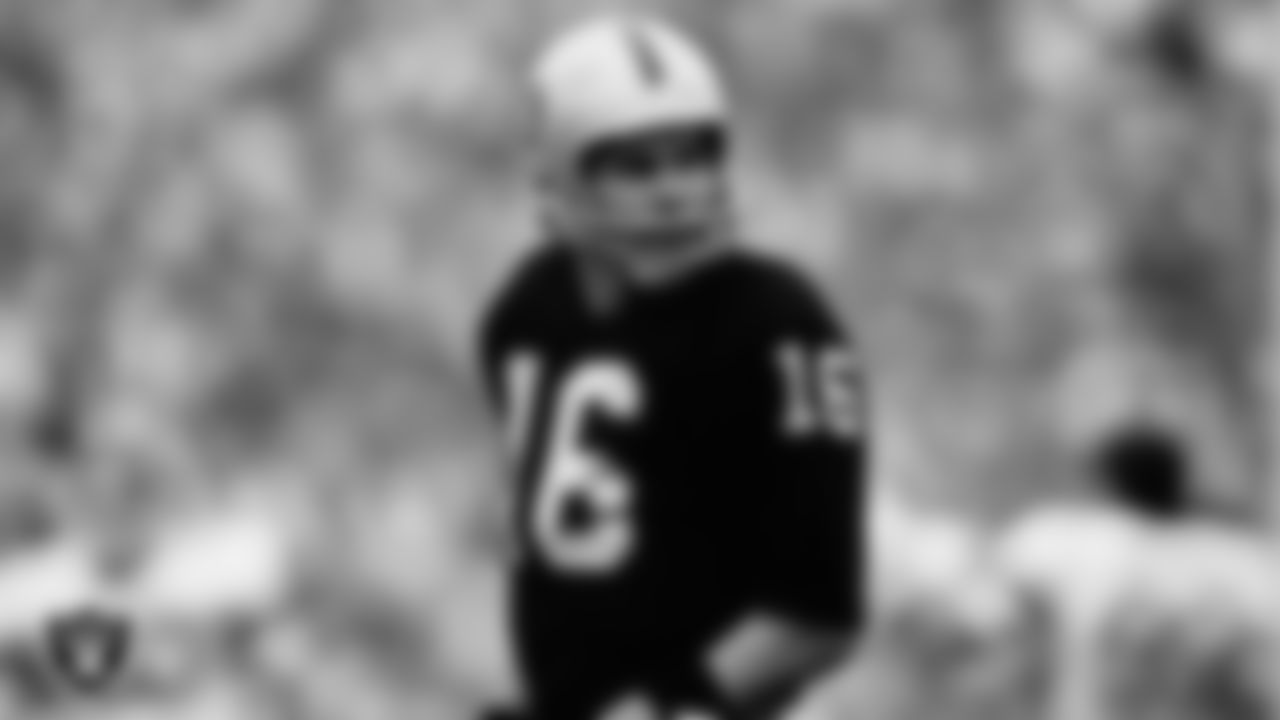
Jim Plunkett joined the Raiders in 1978 as a backup to Kenny Stabler. Plunkett got his chance to start in 1980 and went on to be named Super Bowl XV MVP and also led the Raiders to the Super Bowl XVIII title. Plunkett played in 70 regular-season games with 57 starts and completed 960 of 1,707 pass attempts for 12,665 yards and 80 TDs.
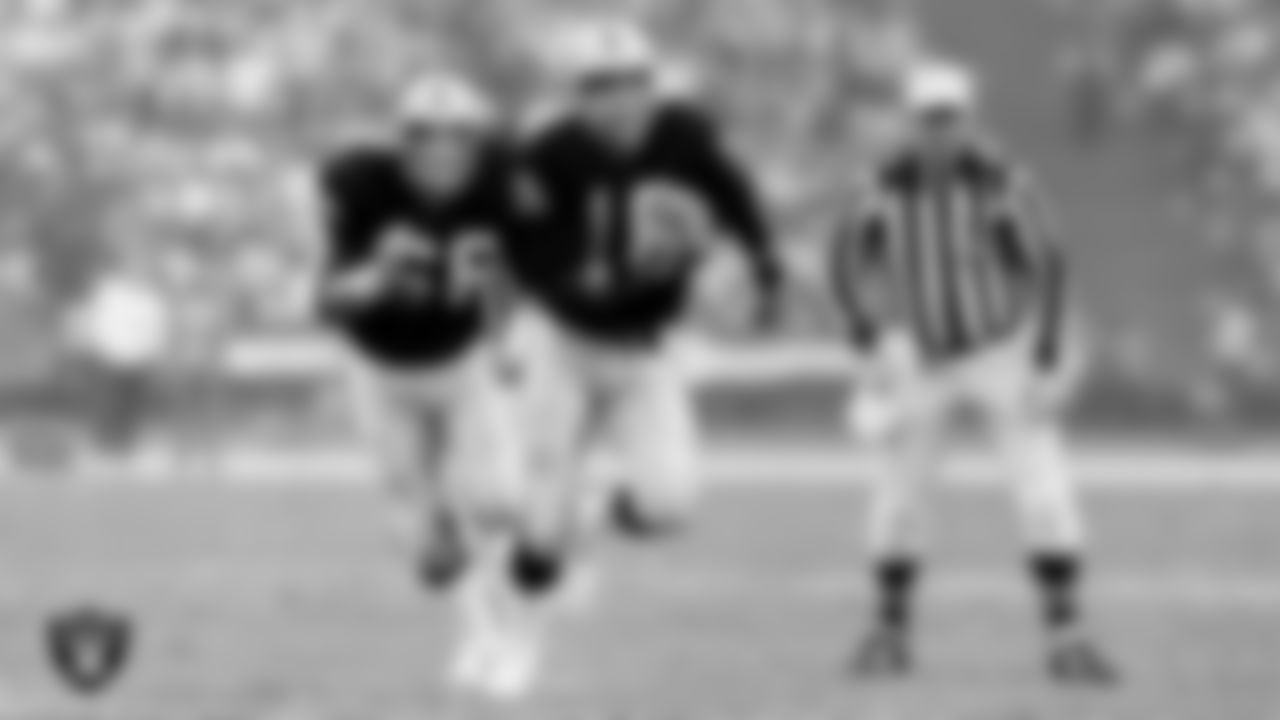
Jim Plunkett joined the Raiders in 1978 as a backup to Kenny Stabler. Plunkett got his chance to start in 1980 and went on to be named Super Bowl XV MVP and also led the Raiders to the Super Bowl XVIII title. Plunkett played in 70 regular-season games with 57 starts and completed 960 of 1,707 pass attempts for 12,665 yards and 80 TDs.
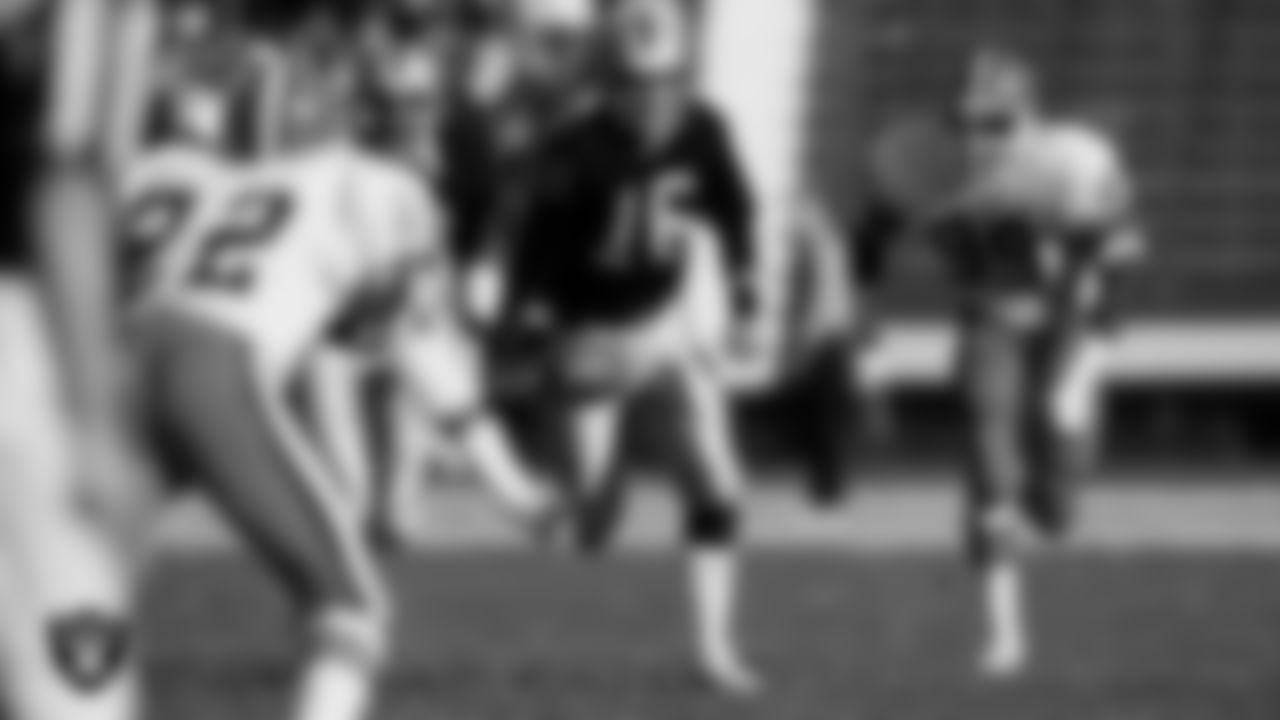
Jim Plunkett joined the Raiders in 1978 as a backup to Kenny Stabler. Plunkett got his chance to start in 1980 and went on to be named Super Bowl XV MVP and also led the Raiders to the Super Bowl XVIII title. Plunkett played in 70 regular-season games with 57 starts and completed 960 of 1,707 pass attempts for 12,665 yards and 80 TDs.
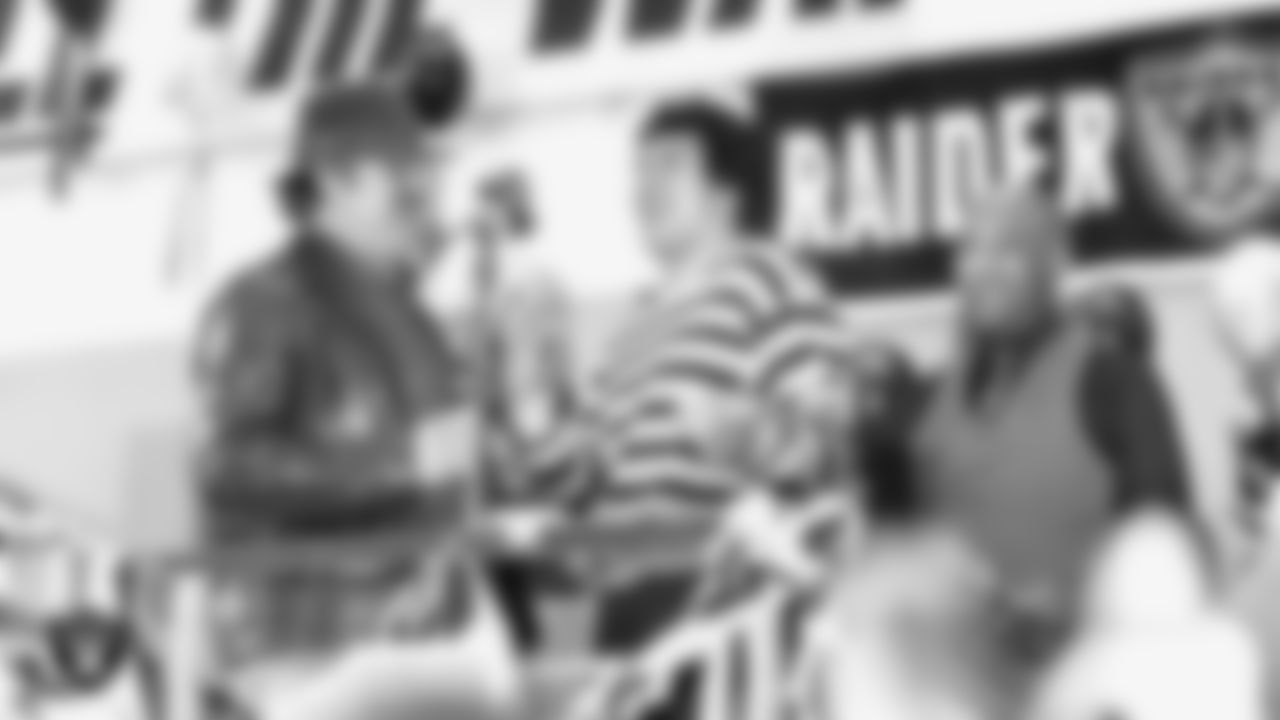
Jim Plunkett joined the Raiders in 1978 as a backup to Kenny Stabler. Plunkett got his chance to start in 1980 and went on to be named Super Bowl XV MVP and also led the Raiders to the Super Bowl XVIII title. Plunkett played in 70 regular-season games with 57 starts and completed 960 of 1,707 pass attempts for 12,665 yards and 80 TDs.
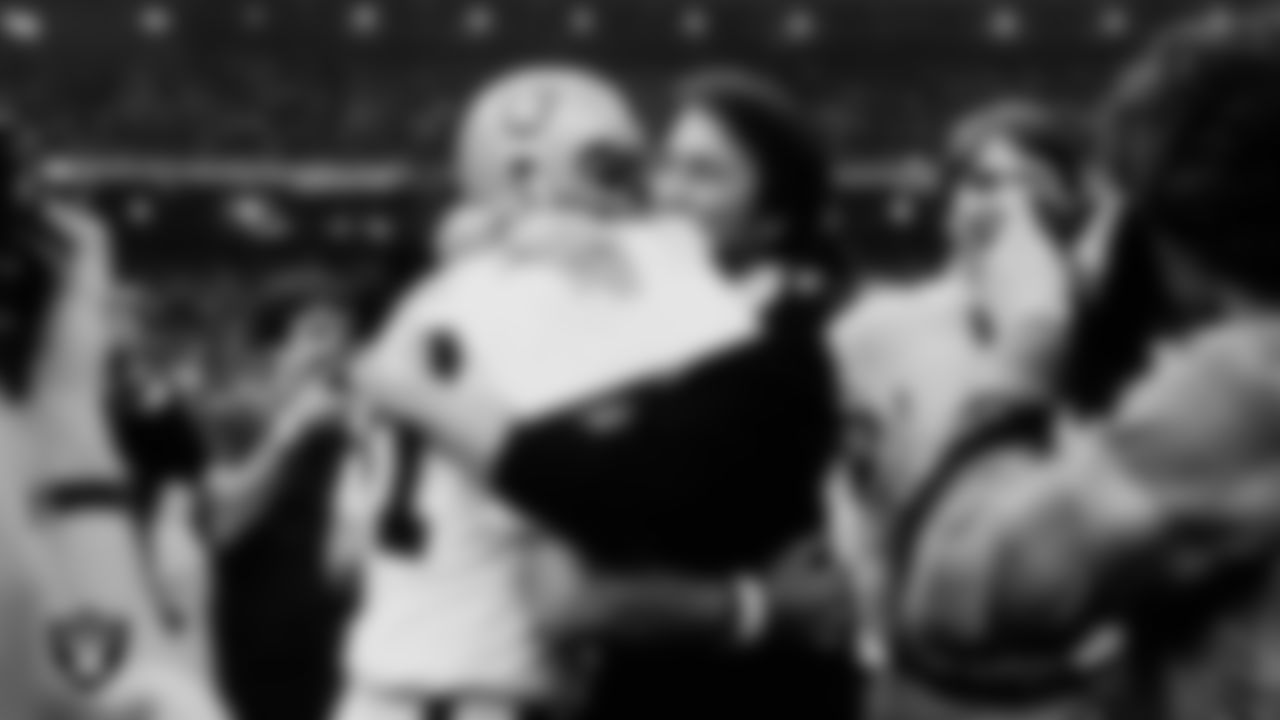
Jim Plunkett joined the Raiders in 1978 as a backup to Kenny Stabler. Plunkett got his chance to start in 1980 and went on to be named Super Bowl XV MVP and also led the Raiders to the Super Bowl XVIII title. Plunkett played in 70 regular-season games with 57 starts and completed 960 of 1,707 pass attempts for 12,665 yards and 80 TDs.
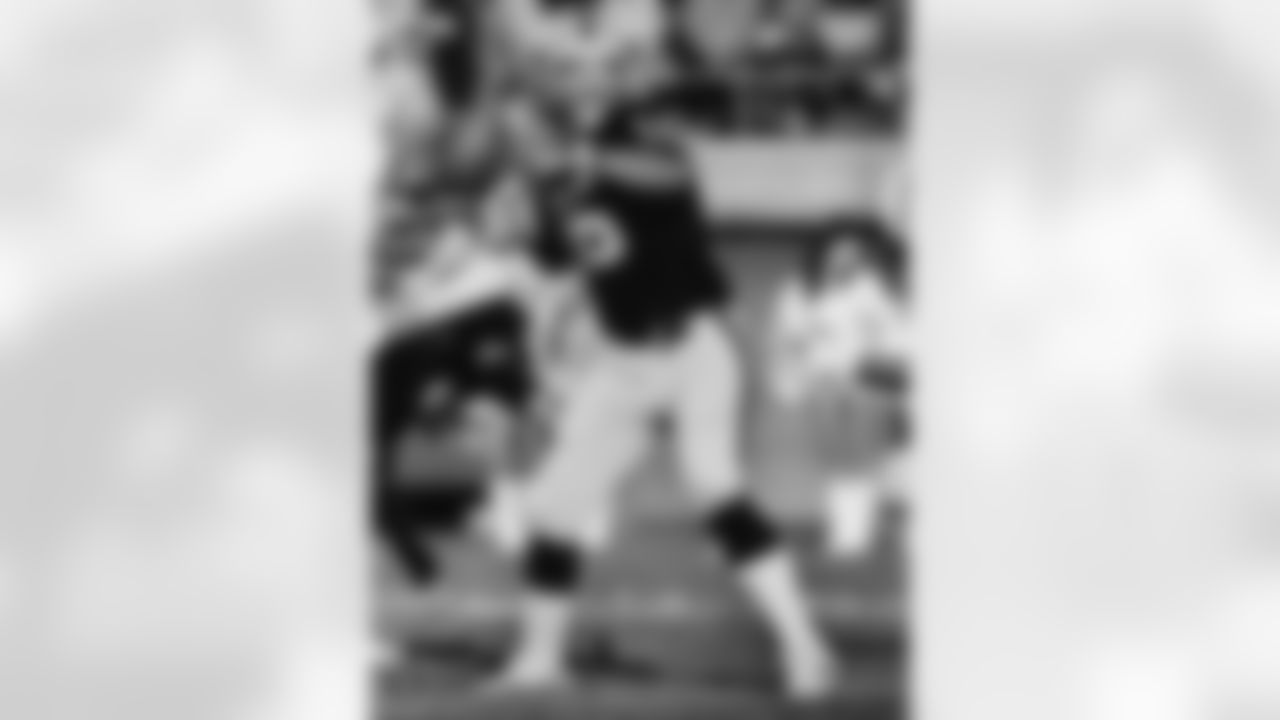
Jim Plunkett joined the Raiders in 1978 as a backup to Kenny Stabler. Plunkett got his chance to start in 1980 and went on to be named Super Bowl XV MVP and also led the Raiders to the Super Bowl XVIII title. Plunkett played in 70 regular-season games with 57 starts and completed 960 of 1,707 pass attempts for 12,665 yards and 80 TDs.
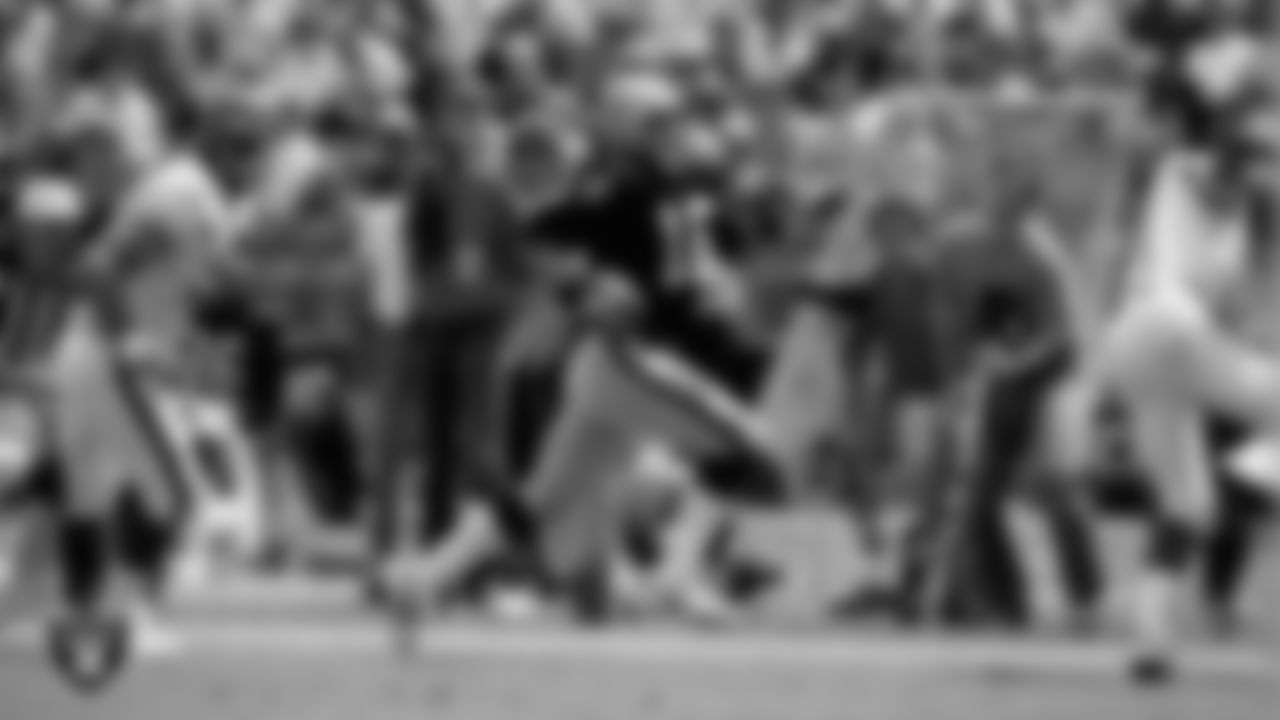
Jim Plunkett joined the Raiders in 1978 as a backup to Kenny Stabler. Plunkett got his chance to start in 1980 and went on to be named Super Bowl XV MVP and also led the Raiders to the Super Bowl XVIII title. Plunkett played in 70 regular-season games with 57 starts and completed 960 of 1,707 pass attempts for 12,665 yards and 80 TDs.
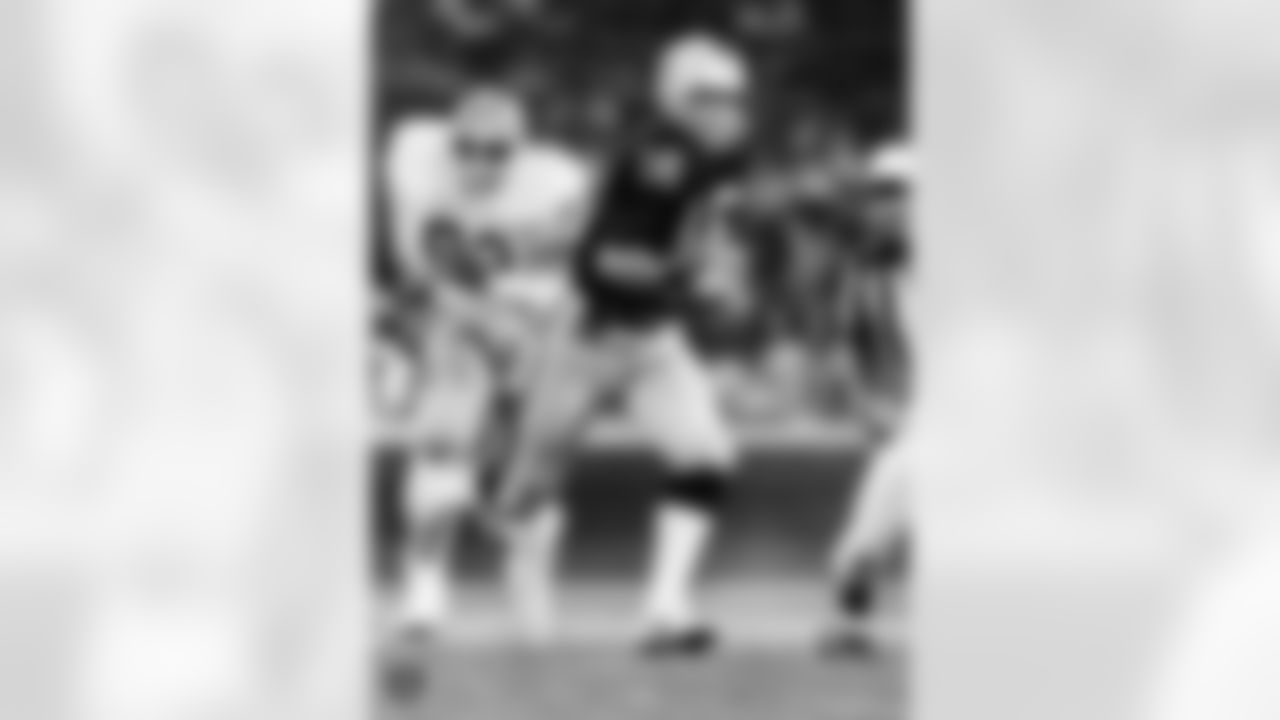
Jim Plunkett joined the Raiders in 1978 as a backup to Kenny Stabler. Plunkett got his chance to start in 1980 and went on to be named Super Bowl XV MVP and also led the Raiders to the Super Bowl XVIII title. Plunkett played in 70 regular-season games with 57 starts and completed 960 of 1,707 pass attempts for 12,665 yards and 80 TDs.
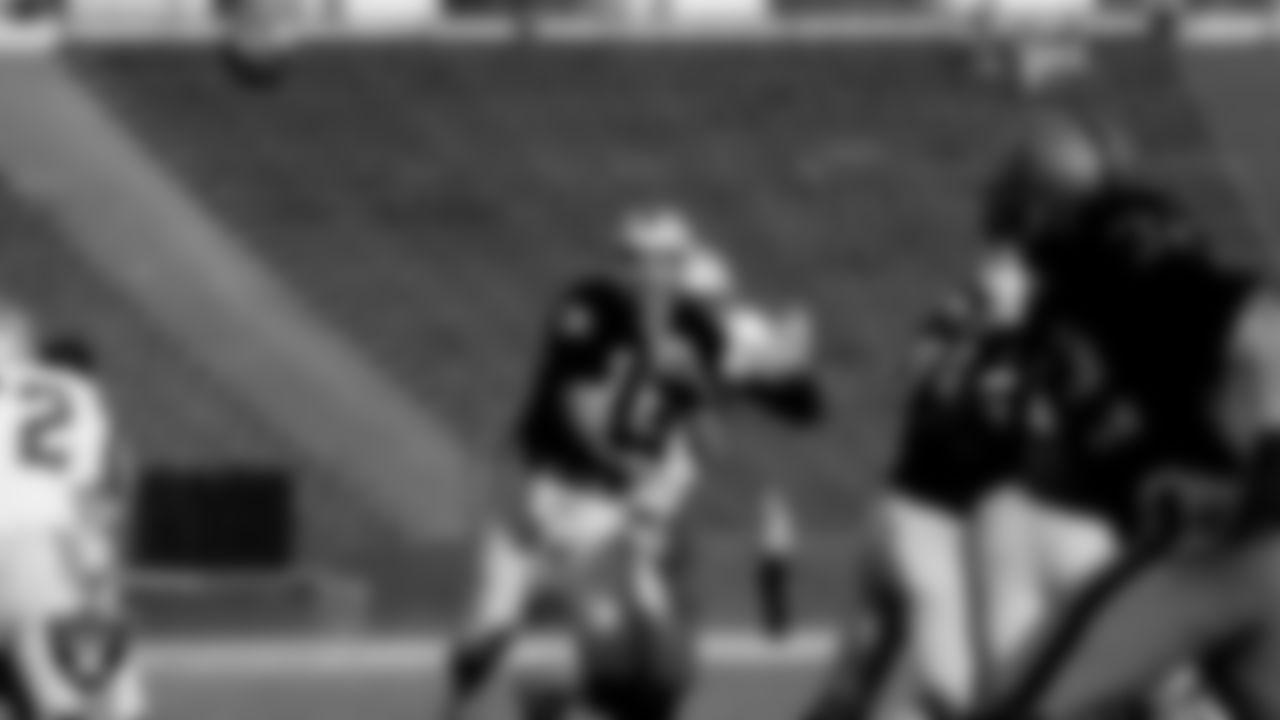
Jim Plunkett joined the Raiders in 1978 as a backup to Kenny Stabler. Plunkett got his chance to start in 1980 and went on to be named Super Bowl XV MVP and also led the Raiders to the Super Bowl XVIII title. Plunkett played in 70 regular-season games with 57 starts and completed 960 of 1,707 pass attempts for 12,665 yards and 80 TDs.
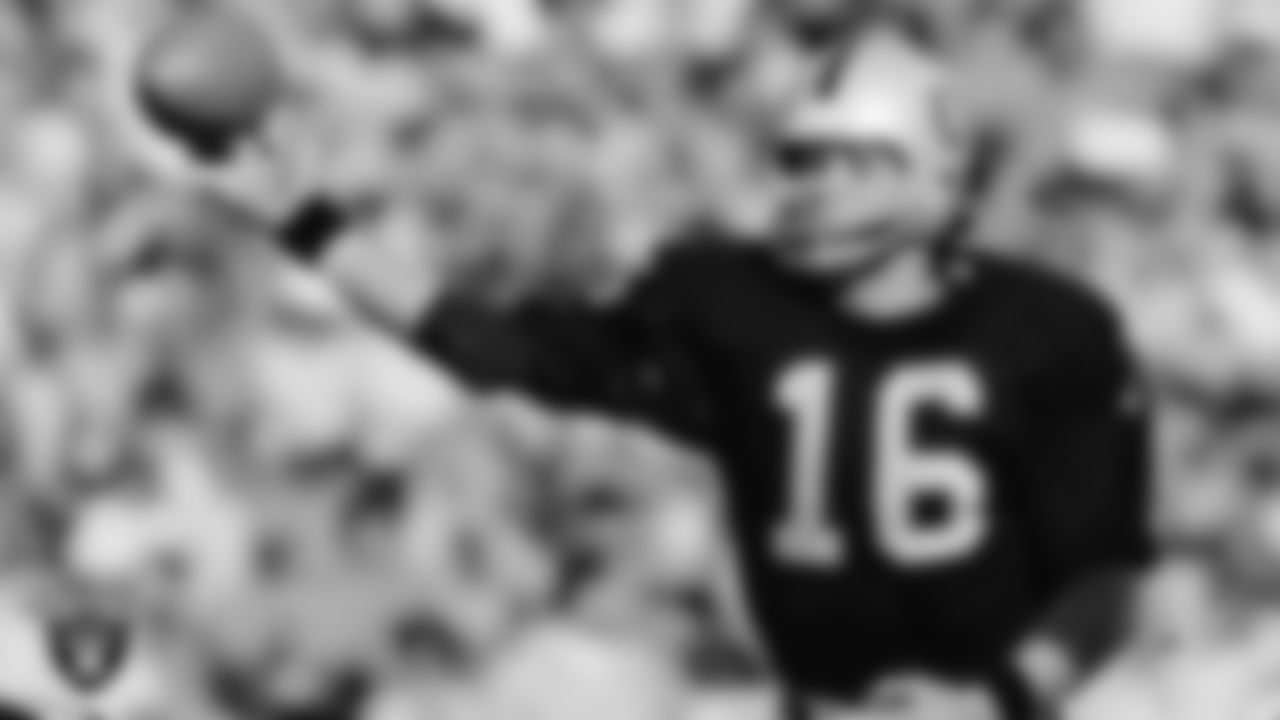
Jim Plunkett joined the Raiders in 1978 as a backup to Kenny Stabler. Plunkett got his chance to start in 1980 and went on to be named Super Bowl XV MVP and also led the Raiders to the Super Bowl XVIII title. Plunkett played in 70 regular-season games with 57 starts and completed 960 of 1,707 pass attempts for 12,665 yards and 80 TDs.
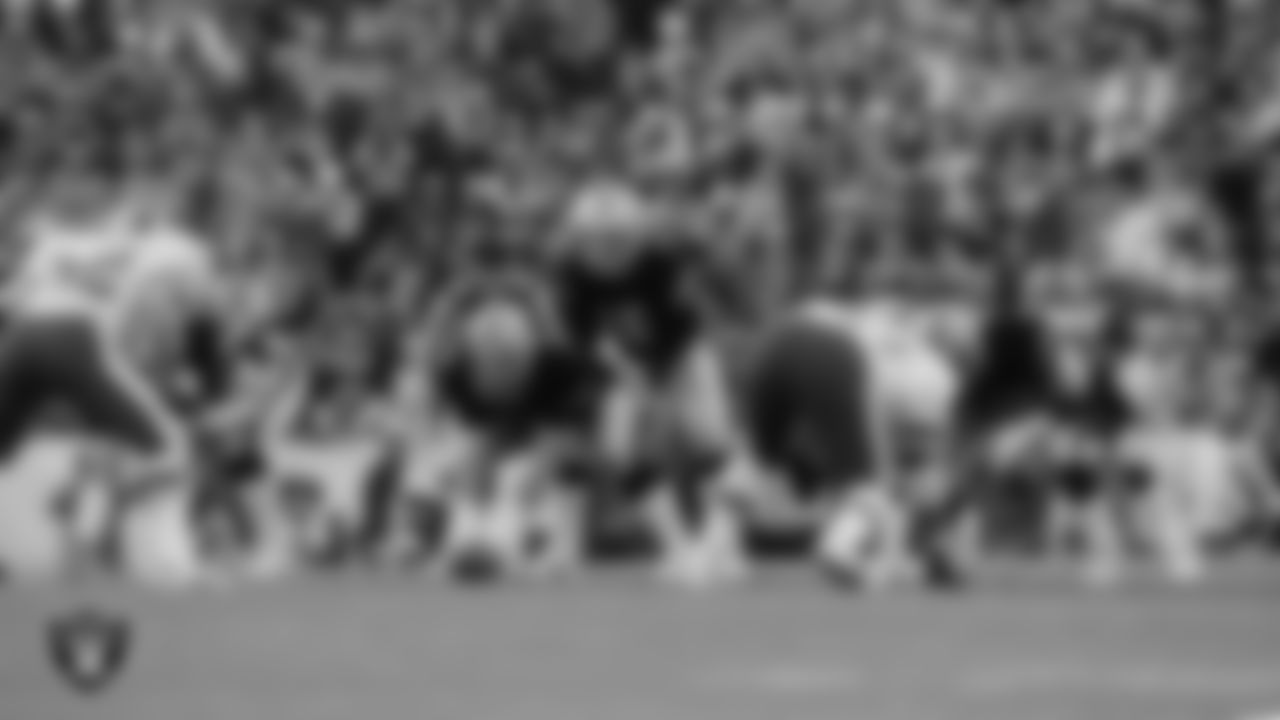
Jim Plunkett joined the Raiders in 1978 as a backup to Kenny Stabler. Plunkett got his chance to start in 1980 and went on to be named Super Bowl XV MVP and also led the Raiders to the Super Bowl XVIII title. Plunkett played in 70 regular-season games with 57 starts and completed 960 of 1,707 pass attempts for 12,665 yards and 80 TDs.
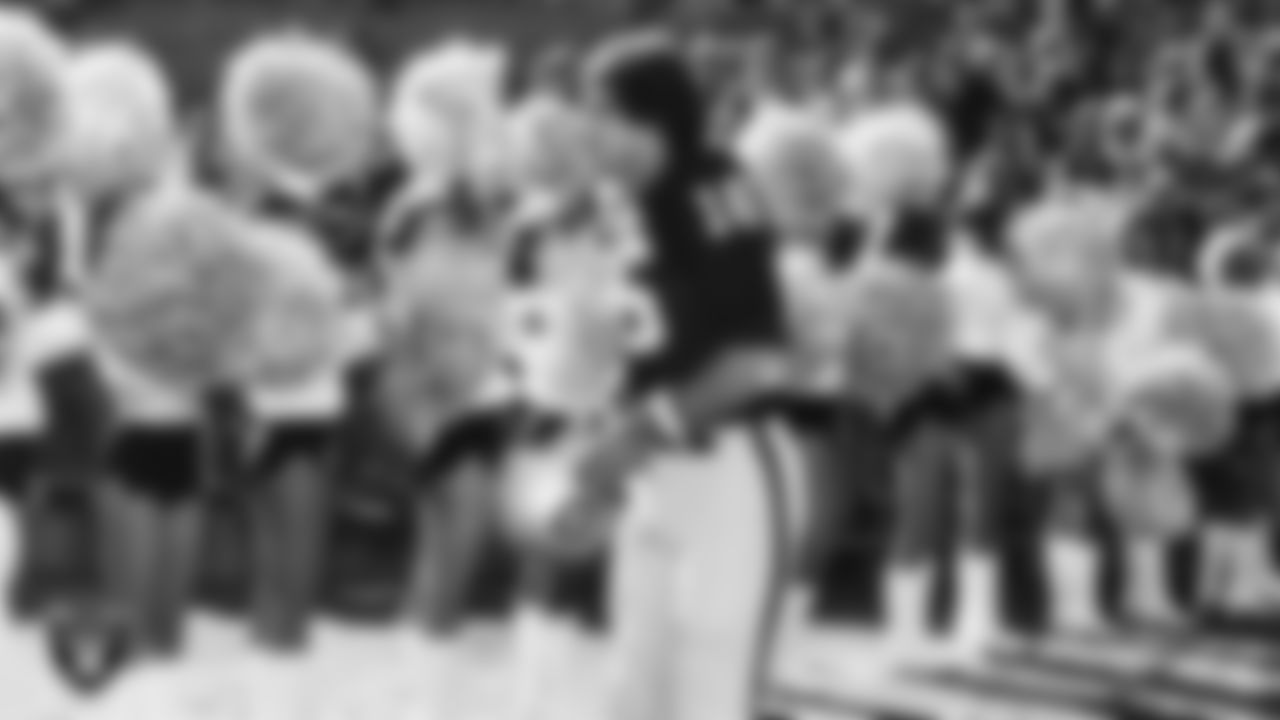
Jim Plunkett joined the Raiders in 1978 as a backup to Kenny Stabler. Plunkett got his chance to start in 1980 and went on to be named Super Bowl XV MVP and also led the Raiders to the Super Bowl XVIII title. Plunkett played in 70 regular-season games with 57 starts and completed 960 of 1,707 pass attempts for 12,665 yards and 80 TDs.
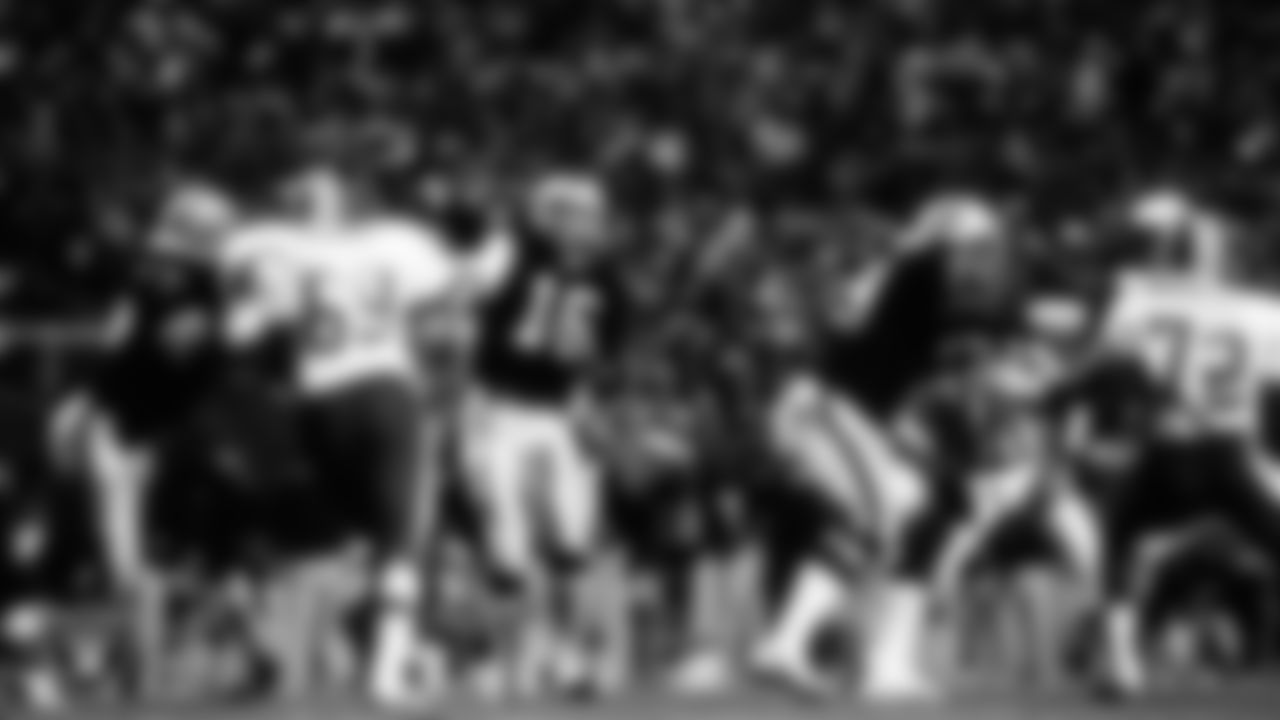
Jim Plunkett joined the Raiders in 1978 as a backup to Kenny Stabler. Plunkett got his chance to start in 1980 and went on to be named Super Bowl XV MVP and also led the Raiders to the Super Bowl XVIII title. Plunkett played in 70 regular-season games with 57 starts and completed 960 of 1,707 pass attempts for 12,665 yards and 80 TDs.
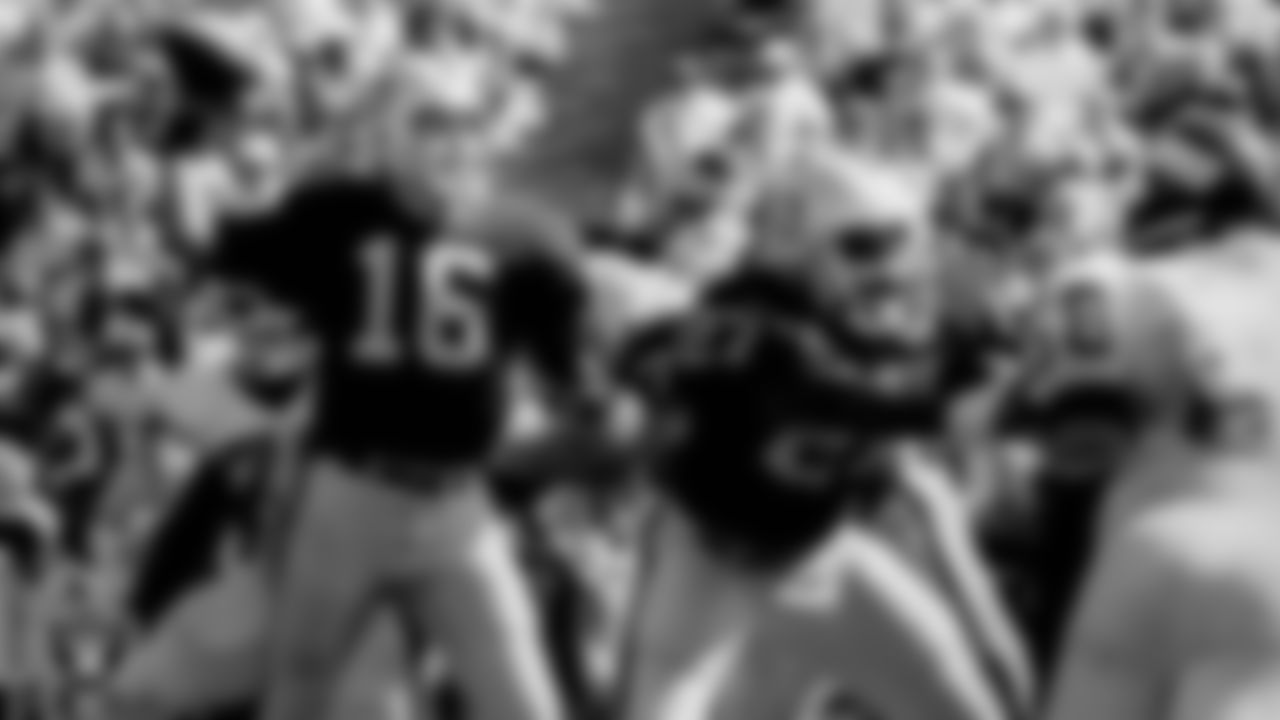
Jim Plunkett joined the Raiders in 1978 as a backup to Kenny Stabler. Plunkett got his chance to start in 1980 and went on to be named Super Bowl XV MVP and also led the Raiders to the Super Bowl XVIII title. Plunkett played in 70 regular-season games with 57 starts and completed 960 of 1,707 pass attempts for 12,665 yards and 80 TDs.
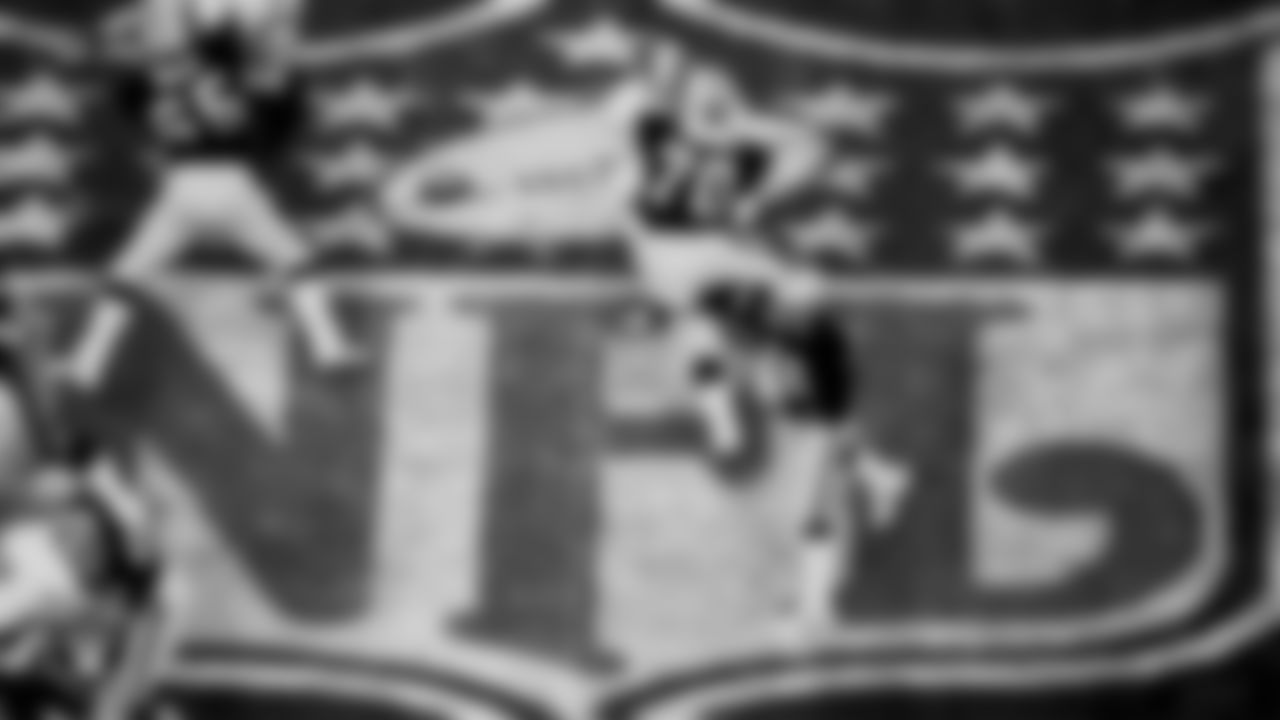
Jim Plunkett joined the Raiders in 1978 as a backup to Kenny Stabler. Plunkett got his chance to start in 1980 and went on to be named Super Bowl XV MVP and also led the Raiders to the Super Bowl XVIII title. Plunkett played in 70 regular-season games with 57 starts and completed 960 of 1,707 pass attempts for 12,665 yards and 80 TDs.

Jim Plunkett joined the Raiders in 1978 as a backup to Kenny Stabler. Plunkett got his chance to start in 1980 and went on to be named Super Bowl XV MVP and also led the Raiders to the Super Bowl XVIII title. Plunkett played in 70 regular-season games with 57 starts and completed 960 of 1,707 pass attempts for 12,665 yards and 80 TDs.



